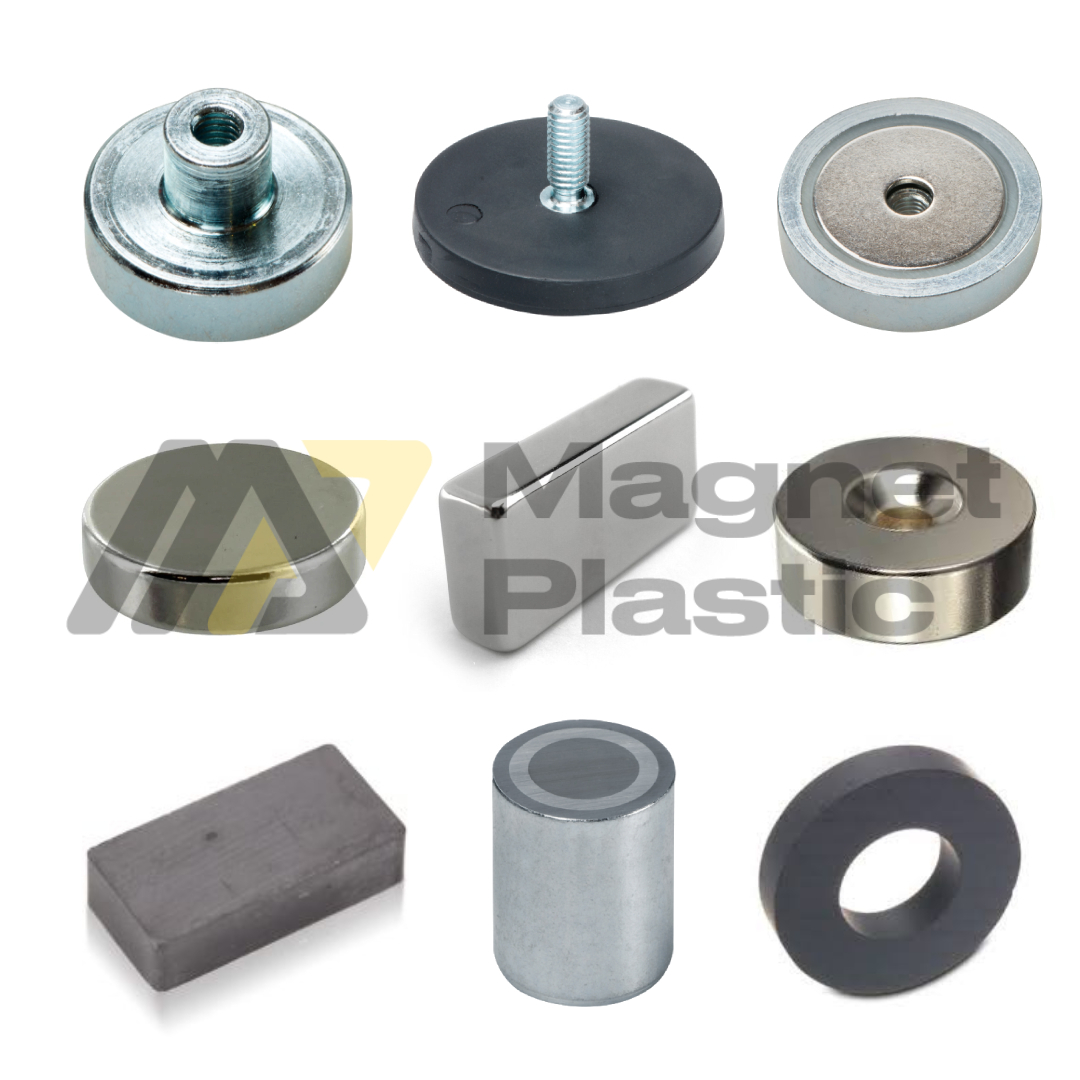Permanent Magnet Classification
Permanent magnets are essential devices in a wide variety of industrial and technological applications. They are classified according to the materials used in their manufacture, which determines their magnetic properties and resistance to environmental factors. The main types of permanent magnets are described below.
- Ferrite (Ceramic) Magnets
Ferrite magnets are composed of iron oxide mixed with other ceramic materials. They are the most commonly used due to their low cost and good value for money. They have the following characteristics:
Good performance at high temperatures (up to 250ºC).
High resistance to demagnetization.
They are fragile and their magnetic force is not especially powerful.
They tend to demagnetize at low temperatures, although technological improvements have reduced this problem.
- Alnico Magnets
Alnico magnets are composed of an alloy of aluminum, nickel and cobalt, with possible inclusions of copper and titanium. Their main advantages are:
High resistance to corrosion.
Ability to withstand high temperatures (up to 425ºC).
Low attraction force compared to other magnets.
- Samarium-Cobalt Magnets (SmCo)
These magnets are composed of an alloy of samarium and cobalt, along with iron and light rare earths. Their main characteristics include:
Second highest magnetic force, after neodymium.
Higher resistance to high temperatures (up to 300ºC).
They are brittle and prone to cracking.
They do not require coating to resist corrosion.
- Neodymium Magnets (NdFeB)
Neodymium magnets, also known as NdFeB, are composed of neodymium, iron and boron. They are the most powerful permanent magnets available on the market. Their properties include:
High magnetic force, ideal for small spaces where high attraction is needed.
They work well at room temperature, but should not be exposed to temperatures above 80ºC-200ºC, depending on their quality.
They require a protective coating against corrosion, such as:
Nickel (Ni-Cu-Ni)
Gold (Ni-Cu-Ni-Au)
Chrome (Ni-Cu-Ni-Cr)
Epoxy (Ni-Cu-Ni-Epoxy)
Zinc (Zn), among others.
Classification of Neodymium Magnets
Neodymium magnets are identified by a combination of letters and numbers that indicate their properties:
The letter “N” indicates that it is made of neodymium.
The numbers (35, 38, 40, 42, 48, 52) represent the maximum energy product, which measures the strength of the magnet.
The maximum working temperature is designated by letters:
M = 100ºC
H = 120ºC
SH = 150ºC
UH = 180ºC
EH = 200ºC
Factors that can affect magnetic strength
Heat: Exposure to temperatures above their specified limit can cause demagnetization.
Intense magnetic fields: High electric or magnetic fields can alter their properties.
Conclusion
Permanent magnets are essential in numerous industrial and technological applications. Their classification according to the manufacturing material allows the appropriate type of magnet to be selected for each need. While ferrite and alnico magnets stand out for their resistance to temperature and corrosion, samarium-cobalt and neodymium magnets offer greater magnetic strength. Choosing the right magnet is key to maximizing efficiency and durability in any application.
